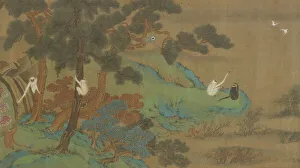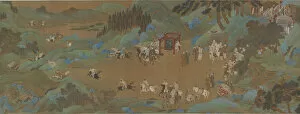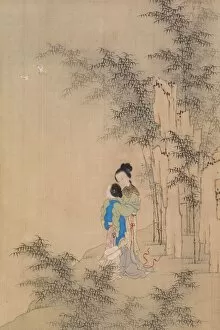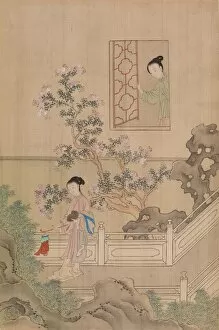Qiu Ying Collection
Qiu Ying: A Master of Chinese Artistry Qiu Ying, a renowned artist from the Ming and Qing dynasties, left an indelible mark on the world of Chinese art
All Professionally Made to Order for Quick Shipping
Qiu Ying: A Master of Chinese Artistry Qiu Ying, a renowned artist from the Ming and Qing dynasties, left an indelible mark on the world of Chinese art. With his exceptional talent and unique style, he created masterpieces that continue to captivate audiences today. In "Landscape with Gibbons and Cranes, " Qiu Ying transports us to a serene natural setting during the Qing dynasty. The delicate brushstrokes bring life to the gibbons swinging gracefully among cranes, evoking a sense of harmony between man and nature. "Spring Festival on the River" takes us back in time to celebrate this joyous occasion during the 18th century. Qiu Ying's meticulous attention to detail captures the festive atmosphere as people gather along riverbanks, exchanging greetings amidst colorful lanterns. In "Visitor to a Mountain Retreat, " we witness Qiu Ying's ability to depict solitude and tranquility. This Ming dynasty piece invites us into a secluded mountain retreat where one can find solace away from worldly distractions. "Landscape with Daoist immortals in the mountains" showcases Qiu Ying's fascination with spirituality. Inspired by Daoist philosophy, he skillfully portrays ethereal beings dwelling peacefully within majestic peaks, inviting viewers into their mystical realm. "The Shanglin Park: Imperial Hunt" offers a glimpse into royal pastimes during either the Ming or Qing dynasty. Through intricate details and vibrant colors, Qiu Ying brings alive an imperial hunt scene filled with excitement and grandeur. Step into "The Hall of Scenic Beauty, " another masterpiece by unknown creators from the 17th century. Here, you'll be enchanted by Qiu Ying's ability to transport you into an idyllic garden oasis where beauty abounds at every turn. One cannot overlook Zhao Mengfu Writing Heart Sutra in Exchange for Tea.












